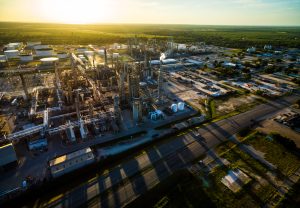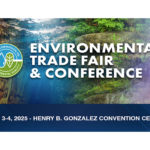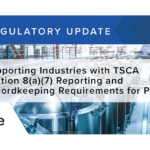
In the realm of environmental site assessments, Phase 2 assessments play a crucial role in evaluating the environmental conditions of a property. Specifically, Galveston Phase 2 Environmental Site Assessments provide valuable insights into the potential presence of contaminants and associated risks. Understanding the process and significance of these assessments is essential for property owners, developers, and regulatory agencies alike.
Understanding Phase 2 Environmental Site Assessments
Definition and Purpose of Phase 2 Assessments
Phase 2 Environmental Site Assessments in Galveston are a crucial step in the environmental due diligence process. Building upon the initial findings of Phase 1 assessments, Phase 2 assessments delve deeper into the environmental conditions of a site. While Phase 1 assessments focus on identifying potential environmental concerns through historical research and visual inspections, Phase 2 assessments involve actual sampling and laboratory analysis to confirm the presence or absence of contaminants.
By conducting Phase 2 assessments, environmental consultants aim to provide a more detailed understanding of the environmental risks associated with a property. These assessments play a vital role in assessing the potential impact of contaminants on human health and the environment, helping stakeholders make informed decisions regarding property transactions and development projects.
Furthermore, Phase 2 assessments are instrumental in meeting regulatory requirements and demonstrating compliance with environmental standards. Government agencies often require these assessments to assess the extent of contamination, determine liability, and establish appropriate remediation measures.
Key Components of Phase 2 Assessments
A Phase 2 Environmental Site Assessment in Galveston typically comprises several key components that work together to provide a comprehensive evaluation of environmental conditions. These components include:
- Preliminary Site Investigation: This phase involves a detailed examination of the site’s history, previous land use, and potential sources of contamination. It sets the groundwork for the sampling and analysis phase.
- Sampling and Analysis: During this stage, environmental professionals collect samples of soil, groundwater, and air to analyze them for the presence of contaminants. Various analytical techniques are employed to quantify the levels of pollutants and assess potential risks.
- Risk Assessment and Evaluation: Once the analytical results are obtained, a risk assessment is conducted to evaluate the potential impact of contaminants on human health and the environment. This step is crucial in determining the need for remediation and developing risk management strategies.
The Process of Conducting Phase 2 Assessments in Galveston
Preliminary Site Investigation
Before initiating sampling and analysis, a preliminary site investigation is conducted to gather crucial background information about the property. This includes evaluating historical records, previous site uses, and potential sources of contamination. By scrutinizing available data, environmental consultants gain a better understanding of potential risk areas and focus their subsequent efforts accordingly.
During the preliminary site investigation, consultants delve deep into the history of the property, unearthing fascinating details about its past. They uncover stories of industrial operations that once thrived on the land, leaving behind a legacy of potential environmental concerns. By piecing together fragments of the property’s past, consultants paint a vivid picture of its evolution, helping them identify areas that require closer attention.
Sampling and Analysis
The heart of any Phase 2 assessment lies in the collection of environmental samples and their subsequent laboratory analysis. Multiple samples are strategically taken from soil, groundwater, and other media to ensure a comprehensive evaluation. This process adheres to strict sampling protocols and utilizes state-of-the-art equipment to obtain reliable results.
As environmental consultants embark on the sampling and analysis phase, they become detectives, carefully gathering evidence from the site. Armed with specialized tools, they meticulously collect soil samples, extracting secrets hidden beneath the surface. They plunge groundwater monitoring wells deep into the earth, capturing a snapshot of the liquid that flows beneath our feet. With each sample collected, the consultants unlock a piece of the puzzle, revealing the true nature of the site’s environmental condition.
Once the samples are collected, they undergo rigorous analysis in accredited laboratories. Experts utilize various analytical techniques capable of detecting even trace amounts of contaminants. The results are then compared against relevant regulatory guidelines to determine the extent and severity of any contamination present.
Risk Assessment and Evaluation
Based on the findings of the sampling and analysis phase, environmental consultants conduct a risk assessment. This involves evaluating the potential human health and environmental risks associated with the contamination identified. Factors such as exposure pathways, toxicity levels, and contact scenarios are analyzed to determine the need for further action.
As the risk assessment unfolds, consultants delve into the intricate web of potential risks that the contamination poses. They consider the pathways through which humans and the environment may come into contact with the contaminants. They assess the toxicity levels, carefully weighing the potential harm that could be inflicted. They envision scenarios where unsuspecting individuals may unknowingly encounter the contamination, and they strive to understand the gravity of the situation. Through this meticulous evaluation, consultants gain a comprehensive understanding of the risks at hand.
The risk assessment also assists in identifying appropriate remediation measures, if required. These measures may include containment, remediation, or monitoring strategies tailored to the specific site conditions, regulatory requirements, and the surrounding environment.
Armed with the knowledge gained from the risk assessment, consultants develop a roadmap for addressing the contamination. They carefully consider the unique characteristics of the site, the regulations that govern it, and the delicate balance of the surrounding ecosystem. With these factors in mind, they craft a plan that aims to restore the site to its former glory, ensuring the safety of both humans and the environment.
Regulatory Framework for Phase 2 Assessments in Galveston
Federal and State Environmental Laws
Phase 2 assessments in Galveston adhere to a comprehensive regulatory framework designed to protect public health and the environment. Federal laws, such as the Comprehensive Environmental Response, Compensation, and Liability Act (CERCLA), and state regulations, including the Texas Risk Reduction Program (TRRP), provide the overarching guidelines that consultants must follow during the assessment and remediation processes.
Galveston County Regulations
Galveston County also has its own set of regulations that further govern Phase 2 assessments. These regulations often address local concerns and environmental factors specific to the area. Being familiar with these county regulations is crucial for environmental consultants to ensure compliance and facilitate effective assessment and remediation strategies.
The Role of Environmental Consultants in Phase 2 Assessments
Selecting a Qualified Environmental Consultant
Choosing a qualified environmental consultant is paramount when conducting Phase 2 assessments in Galveston. Look for consultants with relevant experience, proper certifications, and a solid track record. Verify their knowledge of federal, state, and local regulations to ensure compliance throughout the assessment process.
Responsibilities of Environmental Consultants
Environmental consultants play a pivotal role in guiding property owners and developers through the Phase 2 assessment process. Their responsibilities often include coordinating and overseeing sampling activities, analyzing results, conducting risk assessments, and providing expert recommendations based on their findings. It is their duty to communicate effectively and clearly convey the implications and potential next steps to their clients.
Interpreting Phase 2 Assessment Reports
Understanding Report Findings
Phase 2 assessment reports contain valuable information that helps stakeholders understand the environmental conditions of their property. These reports summarize the findings of the sampling, analysis, and risk assessment phases, providing an in-depth analysis of potential contaminants, their concentrations, and associated risks. Interpretation of these reports requires careful consideration and may necessitate further dialogue with the environmental consultant.
Implications for Property Owners and Developers
For property owners and developers, Phase 2 assessment reports serve as a roadmap for informed decision-making. These reports highlight potential risks, identify areas requiring remediation, and aid in determining the feasibility of development plans. Understanding the implications of the findings allows for appropriate risk management strategies and enhances the overall sustainability and value of the property.
In conclusion, Galveston Phase 2 Environmental Site Assessments provide invaluable insights into the environmental conditions of properties. With a thorough understanding of the assessment process, regulatory requirements, and the role of environmental consultants, property owners and developers can ensure that their projects align with environmental sustainability and comply with legal obligations. By embracing these assessments, Galveston continues to foster a safe and environmentally responsible community for generations to come.
If you’re ready to ensure your property in Galveston meets environmental compliance and sustainability standards, ESE Partners is here to guide you through every step of the Phase 2 Environmental Site Assessment process. Our experienced team of environmental engineers and scientists specialize in providing tailored solutions that address your unique challenges and regulatory obligations. With a commitment to improving community quality of life and a promise to deliver opportunity and honest, quality-driven results, ESE Partners is your trusted partner in environmental problem solving. Request A Proposal today and move your business forward responsibly with ESE Partners.








